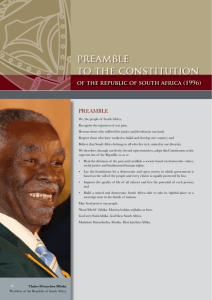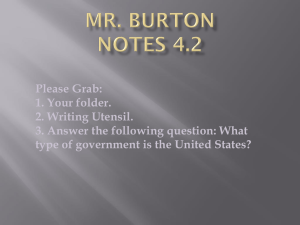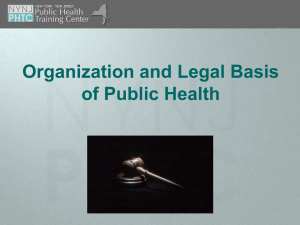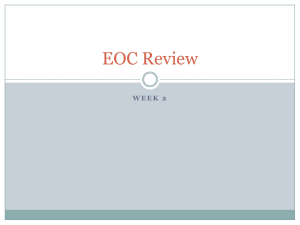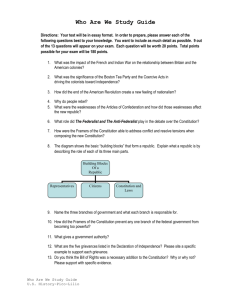Southern & Eastern Asia Government ppt
advertisement
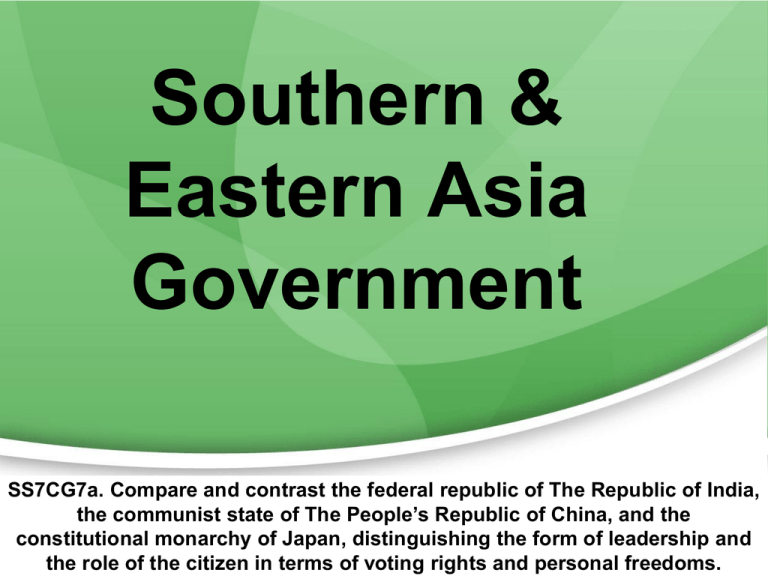
Southern & Eastern Asia Government SS7CG7a. Compare and contrast the federal republic of The Republic of India, the communist state of The People’s Republic of China, and the constitutional monarchy of Japan, distinguishing the form of leadership and the role of the citizen in terms of voting rights and personal freedoms. Use the Governments of Southern & Eastern Asia chart to take notes Republic - form of government in which power is explicitly vested in the people, who in turn exercise their power through elected representatives. India Structure of Government: India The Republic of India has a parliamentary system of government. Form of Leadership: India • The President is the head (chief) of state and is elected by an electoral college to a 5-year term • The Prime Minister is the head of the government and the head of the majority party of the legislative branch (and head of the cabinet). Role of the Citizen: India • Parliament is divided into two houses. The “House of the People” is elected by Indian citizens. The “Council of States” is elected by the “House of the People”. • All citizens 18 and over may vote for their legislators Personal Freedoms: India • Other than voting, the Indian constitution also gives citizens the freedom of speech, freedom of assembly, and freedom of religion • Indians are given the right to conserve their language and culture and to establish schools to teach about their cultures http://www.state.gov/j/drl/rls/hrrpt/humanrightsreport/index.htm#wrapper Federal Republic of India India has 28 states and seven union territories that have the independence to settle problems of law and order (individual states in India are more tightly controlled by the central government than states in the U.S.) *This is already typed on your table in the other column* Based on the information about India, turn to a seat partner and answer the following questions on your notes: 1. How does the government distribute power: unitary, confederation, or federal. Provide evidence for your answer. 2. How does the government determine citizen participation: autocratic, oligarchic, or democratic. If democratic, identify which type. Provide evidence for your answer. China Structure of Government: China The Communist state of the People’s Republic of China Structure of Government: China • A communist state in theory is when all means of production are owned in common, rather than by individuals. In practice, a single authoritarian party controls both the political and economic systems. • Although China is called a republic, true power lies with the ruling Communist Party (Chinese Communist Party the CCP) Form of leadership: China • The President is the head of state and is elected by the National People’s Congress (China’s legislature) • The Premier is the head of government and is the head of the ruling party, the Chinese Communist Party (CCP) • The State Council, which functions as a cabinet, is appointed by the National People’s Congress. Role of the Citizen: China • The communist constitution gives rights to Chinese citizens, including the right to vote for every person over the age of 18. • However, these rights are meaningless because in communist China the actions of citizens are dictated by the government. Role of the Citizen: China For example, Chinese citizens have the right to vote, but only for candidates of the CCP. These candidates when elected have little power because high-ranking officials appointed by the government make the decisions. Personal Freedoms: China • China’s communist government has a history of violating the personal freedoms of its citizens by denying them freedom of speech, freedom of worship, and even safety from physical harm and political persecution. • Recently, China has begun to make efforts to better protect its citizens’ personal freedoms. http://www.state.gov/j/drl/rls/hrrpt/humanrightsreport/index.htm#wrapper China China has 23 provinces which have provincial People’s Congresses. However, only CCP approved candidates may be elected. *This is already typed on your table in the other column* China’s official name is The People’s Republic of China. Based on our earlier definition of a republic and your knowledge now of China’s system of government, why is this name inaccurate? Based on the information about China, turn to a seat partner and answer the following questions on your notes: 1. How does the government distribute power: unitary, confederation, or federal. Provide evidence for your answer. 2. How does the government determine citizen participation: autocratic, oligarchic, or democratic. If democratic, identify which type. Provide evidence for your answer. Japan Structure of Government: Japan Constitutional Monarchy that follows a parliamentary system of government Structure of Government: Japan After World War II, Japan worked with Western powers to establish a new constitution that preserved the traditional empire of Japan while creating a modern system of democracy Form of leadership: Japan • Japan is a constitutional monarchy because the power of the Emperor is very limited. As a ceremonial figurehead, he is defined by the constitution as "the symbol of the state and of the unity of the people.“ • Therefore, the Emperor is the head of state. • The Prime Minister is the head of government that is elected by the Diet (Japan’s legislature) Role of the Citizen: Japan • The Prime Minister is also the leader of the majority party of the House of Representatives (one of the two houses of the Diet) • Japanese citizens elect members of the House of Representatives • Japanese citizens have the right to vote after the age of 20. Personal Freedoms: Japan • The constitution established rights and personal freedoms for Japanese citizens including freedom of speech, freedom of religion, equal rights for women, and equal education. • The constitution renounces war as a method of solving problems in Japan and prohibits Japan from having a military. Constitutional Monarchy of Japan Japan has 47 Prefectures (Japan’s word for states), but they do not have any independent authority. Instead, they carry out the laws and policies of the national government. *This is already typed on your table in the other column* Based on the information about Japan, turn to a seat partner and answer the following questions on your notes: 1. How does the government distribute power: unitary, confederation, or federal. Provide evidence for your answer. 2. How does the government determine citizen participation: autocratic, oligarchic, or democratic. If democratic, identify which type. Provide evidence for your answer. The next few slides are going to show different images. Your task is to identify which country or countries the image could represent. You must include an explanation for your choices. 1. 2. 3. 4. 4. Constitution 5. 6. 7.

